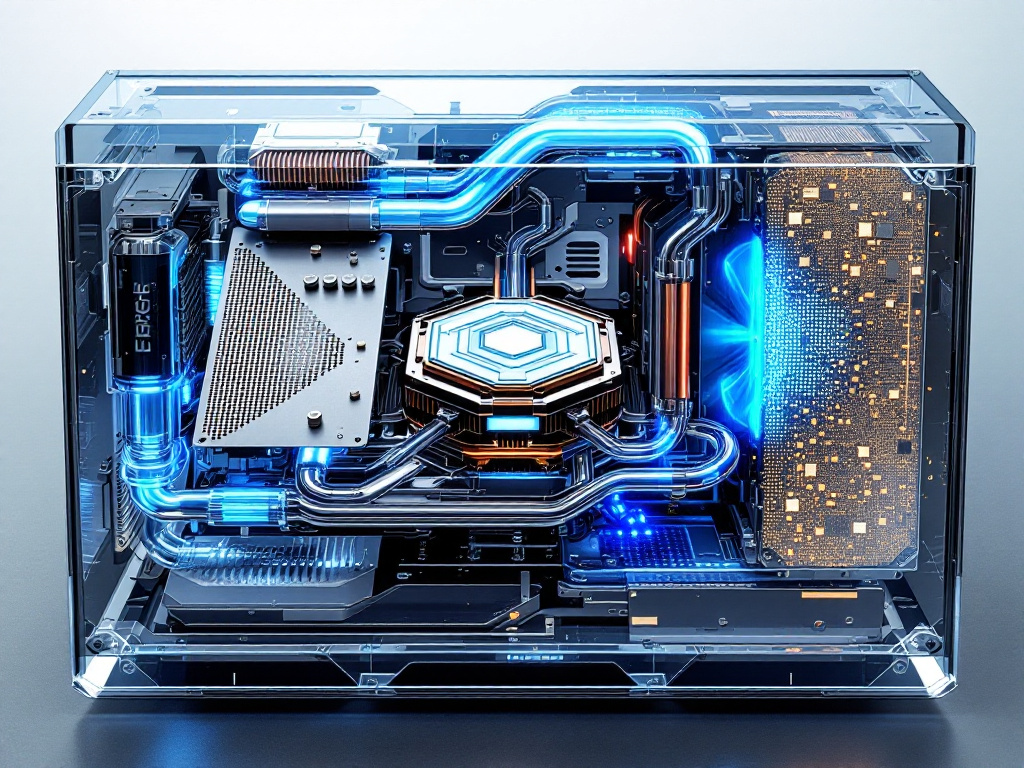Every computer, from the most modest laptop to the most powerful gaming PC, hides a silent yet relentless enemy: heat. Like a heart beating faster under stress, the processor generates energy and, with it, rising temperatures. Since the dawn of computing, engineers and visionaries have raced against time to tame this heat, inventing increasingly bold cooling solutions.
From early passive heat sinks to cutting-edge solid-state cooling systems, the history of PC cooling is a tale of ingenuity, challenges, and technological revolutions. Today, new technologies are rewriting the rules: fans and liquid cooling systems may soon become relics of the past, replaced by vibrating chips, electrostatic fields, and futuristic cooling solutions worthy of a science fiction novel.
Let’s explore the past, present, and future of computer cooling—a journey through science, innovation, and the human drive to push the limits of technology.
The First Steps: From Fans to Heat Sinks
In the 1980s and 1990s, as computers became more powerful, the heat generated by processors became a significant challenge. The first cooling solutions were simple aluminum heat sinks, often paired with fans to increase airflow. While effective, these cooling systems had limitations in terms of efficiency and noise levels.
The Rise of Liquid Cooling
With increasing thermal demands, particularly in high-performance PCs and overclocked systems, liquid cooling emerged as a viable alternative. This method uses a coolant liquid that circulates through tubes and radiators, absorbing and dissipating heat more efficiently than air. However, the complexity of installation and the risk of leaks limited the widespread adoption of this technology.
AirJet: The Future of Solid-State Cooling
One of the most recent innovations in PC cooling is AirJet by Frore Systems. Introduced at CES 2023, this technology features a solid-state cooling system with no moving parts. The core of AirJet is an ultra-thin chip (2.8mm) containing membranes that vibrate at ultrasonic frequencies, creating an airflow that pulls in cool air and directs it toward the processor, ensuring efficient and silent cooling.
The AirJet Mini can remove up to 5.25W of heat while consuming only 1W of power, while the AirJet Pro dissipates 10.75W using just 1.75W. This technology allows for thinner and lighter devices without sacrificing performance.
Ventiva: Electrostatic Cooling Without Fans
Another revolutionary solution is proposed by Ventiva with its ICE9 cooling technology. This cooling system eliminates fans entirely, using electrostatic fields to generate airflow by emitting positive ions. Neutral air molecules are set in motion without the use of mechanical parts, ensuring completely silent operation.
ICE9 can handle thermal loads up to 40W, making it suitable for most laptops. Its compact design optimizes internal space, allowing for larger batteries or additional hardware components.
The Future of PC Cooling
The innovations introduced by Frore Systems and Ventiva mark only the beginning of a new era in PC cooling. The ongoing pursuit of more efficient, silent, and compact cooling solutions is set to transform the design and performance of future computers. The goal is clear: to ensure power and reliability without compromises, in a world where technology is increasingly integrated into our daily lives.
Sources
- Frore Systems: froresystems.com
- Ventiva: ventiva.com








Leave a Comment